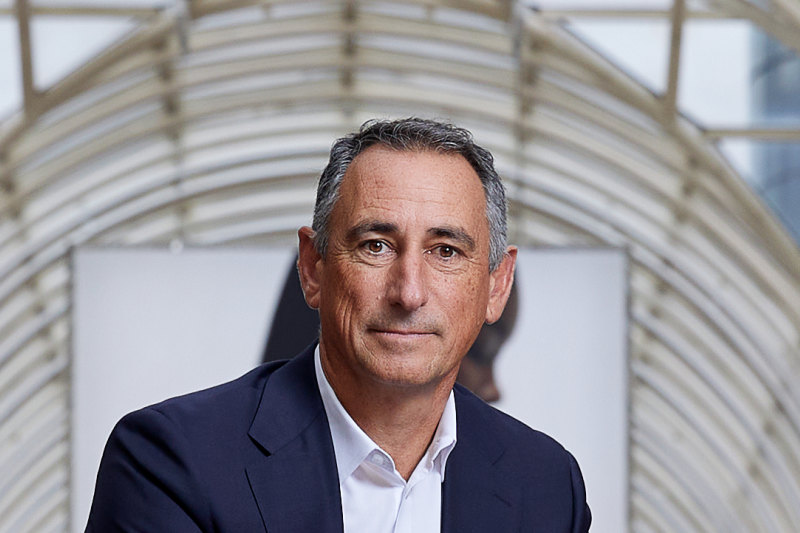What's next for interest rates? The RBA's latest forecast provides some clues
Updated 27 February 2023
Home owners and buyers agonising over how much interest rates could increase over the coming months have been given a glimpse into the Reserve Bank’s thinking with the release of its quarterly economic update.
The RBA’s February Statement on Monetary Policy outlined the bank’s assessment of the economy and what Australians can expect to see over the months and years ahead.
Borrowers hoping for a reprieve from rising interest rates might need to wait a little longer, with the bank confirming it expects to increase the official interest rate at least twice in the months ahead, reiterating the messaging that accompanied a 25 basis point hike of the cash rate target to 3.35 per cent at February’s board meeting.
“The Board expects that further increases in interest rates will be needed to ensure that the current period of high inflation is only temporary,” the Statement on Monetary Policy said.
While home owners and buyers can expect mortgage repayments to continue to increase in the next few months with further rate rises on the cards, the RBA does offer a glimmer of hope, outlining more positive forecasts for both inflation and wages growth.
What’s the RBA’s expectation for inflation in 2023?
Rising energy costs, supply-chain pressures, and surging demand for goods and services combined to push up prices across the economy throughout 2022, but the RBA thinks the worst of inflation is behind us.
“Inflation is likely to have peaked around the end of 2022 and is forecast to return to the target range over coming years,” the statement said.
Inflation reached 7.8 per cent in the year to the December quarter, but the central bank expects that figure to decline to 4.75 per cent over 2023 and reach 3 per cent by mid-2025 as the economy slows.
The RBA’s target range for inflation is 2 to 3 per cent, and the successive interest rate hikes since May 2022 were intended to bring inflation down to a more sustainable level, in part by reducing household spending.
With a greater proportion of household income going towards mortgage repayments – or, by association, rent, with some landlords raising prices in response to rising interest rates – people are expected to have less money to spend on goods and services, reducing demand and easing pressure on prices.
And although the RBA acknowledged the lag between interest rate rises and their effect on the economy, it appears that hiking rates, as unpleasant as it can be for mortgage-holders, could be working.
“The effects of higher interest rates, the rapidly increasing cost of living and declining real wealth are all expected to weigh on demand in the period ahead,” the RBA said.
So, what does that mean for future interest rate rises?
After four super-sized 50 basis point increases to the cash rate target between June and September last year, the RBA reverted to a more typical 25 basis point rise for the following four hikes.
The statement noted that other central banks had slowed the pace of interest rate rises too, and that “a few have paused rate rises or signalled they will soon do so.”
But despite expectations that inflation will ease throughout 2023, the RBA doesn’t appear ready to pause rate rises just yet, reiterating it will continue to “do what is necessary” to bring inflation back down to its target range.
“If high inflation were to become entrenched in people’s expectations, it would be very costly to reduce later,” the bank said.
The RBA said financial market pricing implied that markets expect the cash rate to peak at about 4 per cent, while a consensus of economists forecast a peak of 3.85 per cent in mid-2023.
Three out of the four big banks — NAB, ANZ and Westpac — now expect three more rate hikes, pushing the peak to 4.1 per cent in May.
Big four banks’ interest rate predictions |
||
How high could the cash rate go? |
When could the cash rate peak? |
|
| Westpac | 4.10% | May 2023 |
| CBA | 3.85% | April 2023 |
| NAB | 4.10% | May 2023 |
| ANZ | 4.10% | May 2023 |
It’s worth noting that the RBA outlined upside and downside risks to their inflation forecast, which could affect any future rate decisions.
“Inflation could turn out to be higher than expected if the high inflation environment leads to greater feedback between wages and prices than has been typical in the inflation targeting era,” the RBA said.
That is, if high inflation causes workers’ wage expectations to rise, business may pass on higher labour costs to customers in the form of higher prices, creating a wage-price spiral that puts further upward pressure on inflation.
“On the other hand, inflation could be lower than expected if the easing in goods inflation is faster or more widespread than anticipated,” the RBA said.
How are households reacting to rising interest rates and inflation?
The RBA said the $300 billion in additional savings that households built up through the pandemic, as well as a tighter labour market pushing up wages, meant many households were able to absorb higher mortgage repayments without significant spending cuts.
“Others, though, are experiencing a painful squeeze on their budgets due to higher interest rates and the rising cost of living,” the statement said. “Some households with low savings buffers and high debt relative to incomes will have to adjust their spending sharply.”
How much would your monthly home loan repayments go up if interest rates rise? |
||
Home loan amount |
0.25% increase |
0.50% increase |
| $500,000 | $73 | $148 |
| $750,000 | $110 | $222 |
| $1,000,000 | $148 | $297 |
| $2,000,000 | $295 | $594 |
Source: Domain Home Loans Repayment Calculator. The above table shows the approximate amounts monthly home loan repayments could increase if interest rates rise. Based on a 30-year principal and interest loan with an initial 5% variable interest rate per annum. Information is intended as a guide only. Fees and charges excluded.
Mortgage holders appear to be taking action, though, with refinancing rates reaching record levels.
“Commitments for external refinancing – that is, switching to a new lender – remain very high. Borrowers with variable-rate loans have been seeking better deals on their mortgages as interest rates and the cost of living increase.”
“At the same time, many fixed-rate loans taken out during the pandemic have been reaching the end of their terms and many of these borrowers have been shopping around for the best possible rates, which often entails switching to a new loan at a different lender.”
What’s the RBA’s forecast for wages growth and unemployment?
If there’s one silver lining for borrowers, it’s that the RBA expects wages to continue to grow throughout 2023, which could help some home owners offset rising repayments.
According to the ABS, the wage price index rose 3.1 per cent in the year to the September quarter, and based on timely measures of wage growth, the RBA expects the December result released later this month will show a further increase.
“Firms across a broad range of industries report that higher headline inflation outcomes are contributing to higher wage expectations,” the bank said.
“Around one-third of private sector firms reported wage increases above 5 per cent in the December quarter. This is in contrast to the years leading up to the pandemic when very few firms reported wages growth above 5 per cent.”
“Market economists and unions expect wages growth to be 3.5 to 4 per cent over the next year. Firms surveyed in the liaison program expect wages growth to stabilise around 4 per cent in coming quarters.”
However, as economic growth slows, the RBA expects the unemployment rate to start rising in the middle of the year from its almost 50-year low of 3.5 per cent to 4.5 per cent in mid-2025, which could keep wage growth in check.
We recommend
Three signs you are in mortgage prison and how to break free
How long does it really take to get a home loan these days?
We thought you might like
States
Capital Cities
Capital Cities - Rentals
Popular Areas
Allhomes
More








